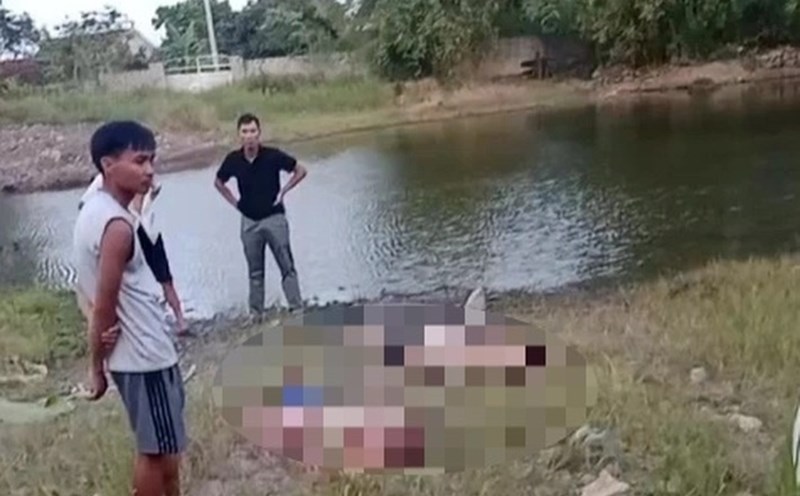Children's decline - Mistakes in first aid of drowning put the child in critical condition
Associate Professor, Dr. Ta Anh Tuan - Head of the Department of Intensive Care of Internal Medicine, National Children's Hospital said that in just 7 days of emergency treatment, 3 drowning cases were hospitalized, of which 2 cases had a steep slope and were not given timely cardiopulmonary resuscitation (CPR) and had asked to be discharged, while one case was not positive.
"Stop going against children when providing drowning emergency care and practice CPR to give them a chance to live. The decline of drowning people causes the time for heart pressure to be delayed, children have longer circulatory arrest, reducing the ability of blood and oxygen to the brain", Associate Professor, Dr. Ta Anh Tuan analyzed.
Water damage - a tragic accident that is still taking the lives of thousands of children every year around the world. Most drowning cases stems from lack of adult supervision, subjectivity, as well as large gaps in prevention knowledge and skills to handle children in distress. A moment of neglect is the price of a lifes journey.
The Department of Intensive Care of Internal Medicine - National Children's Hospital has received many cases of serious drowning, of which the number of cases received initial first aid was not as many, the rest were not suffocated or had their heart forced immediately but were reduced to a state of critical condition. Although many warnings have been given by specialized agencies and the media, initial first aid is incorrect by going backward and the drowning victim still runs away.
As in the case of a 3-year-old boy in Thai Nguyen who drowned in an adult swimming pool. Despite being forced to have a heart attack, suffocated in time and had pink skin, the child then sloped back and ran for 5 minutes - a wrong action that worsened the condition. When taken to the hospital, the child was in a coma, had respiratory failure, circulatory failure and multiple organs.
Despite being actively resuscitated at the National Children's Hospital, after 3 days of treatment, the child was still in critical condition due to severe brain damage due to prolonged lack of oxygen - the consequences of improper first aid from the beginning.
Proper first aid The key to saving drowning childrens lives
Associate Professor, Dr. Ta Anh Tuan said that initial first aid for drowning children is very important because the main cause of death in drowning children is brain damage due to lack of oxygen. The maximum time for brain lack of oxygen is only about 4-5 minutes, if this time is too long, it will lead to irreversible brain damage, causing death or neurological sequelae. Therefore, when seeing a child drowning without sleeping, not breathing, or having a cardiac arrest, it is necessary to immediately resuscitate the cardiopulmonary system (suffering, cardiac arrest).
Many people have the habit of treading their children back up on their shoulders and running, causing epidemics in the stomach to inhale into the airway and delay cardiopulmonary resuscitation (cardiovascular transplant/ suffocation), wasting the golden time to provide emergency care for children, even causing more damage to children.
According to the recommendations of the Vietnam Pediatric Association and the National Children's Hospital, the correct emergency procedure for drowning children includes:
call for help immediately - scream, call for help, call 115.
Take your child out of the water as quickly as possible, depending on the ability to choose indirect rescue (using buoys, ropes, sticks...) or directly (swimming for rescue if skillful).
Respiratory check-up and reaction: Observe the chest, feel the breath, call out names, gently shake the child.
If the child is not breathing - perform cardiopulmonary resuscitation (CPR):
first 5 strokes of suffocation (the mouth, nose and mouth in young children).
A 30-fold extra- chest chest luge is repeatedly suffocating twice, continuously at a rate of 100120 times/minute until the child breathes on his own.
When the child wakes up, place the child on a side and lie safely, keep warm, and quickly take him to a medical facility. Always monitor your breathing and circulation throughout the transportation process.
Some notes when treating drowning children and mistakes to absolutely avoid:
Do not incline your baby back onto the shoulder and run, causing the epidemics in the stomach to inhale into the airway and slow down the resuscitation of the heart and lungs (cardiovascular transplant/suffering), which takes time to provide emergency care for the baby.
heart and lung resuscitation should not be stopped if the child does not have a breathing rhythm.
When the heart is pressed outside the chest, not pressing the chest too hard, it will cause a broken rib and collapse the lungs.
"It is necessary to take all drowning children to medical facilities for further examination and monitoring of complications after drowning.
"The rescuers did not know how to swim but tried to jump into the water, endangering their lives.










